Australian Tropical Rainforest Plants - Online edition
Martynia annua L.
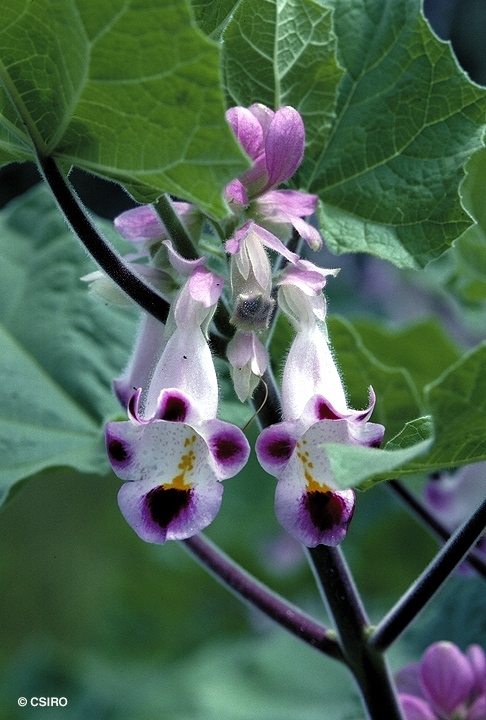
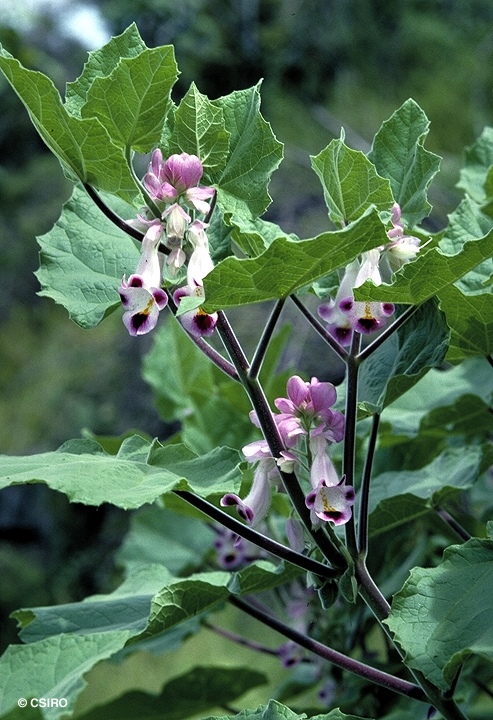
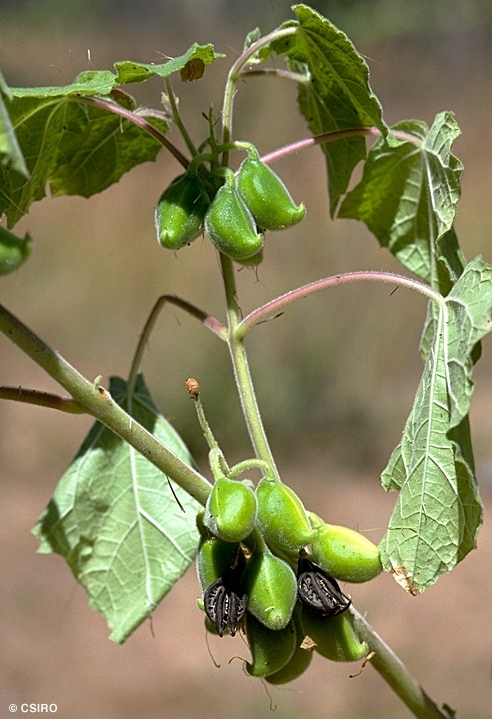
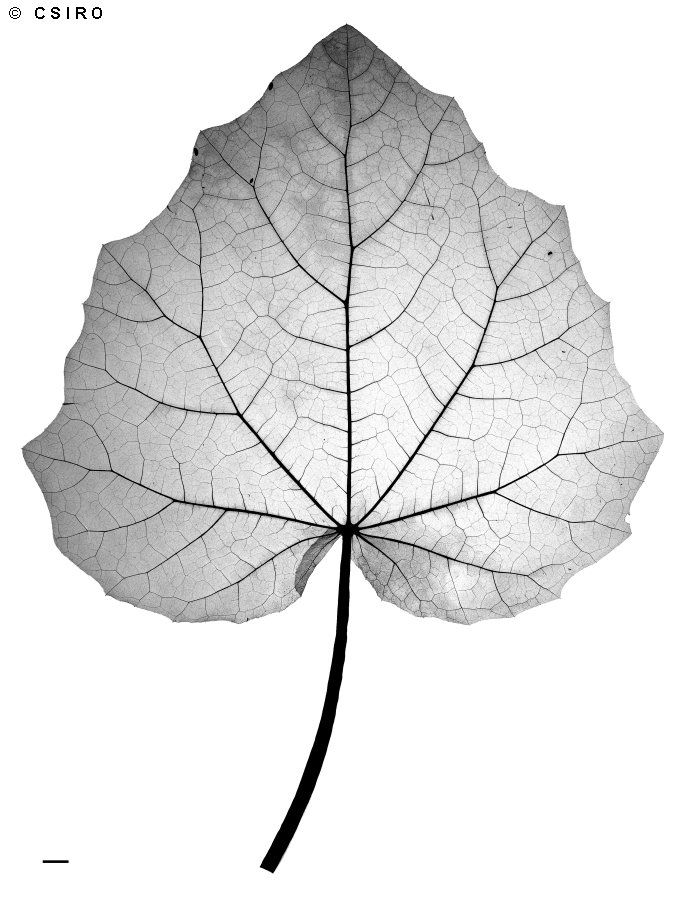
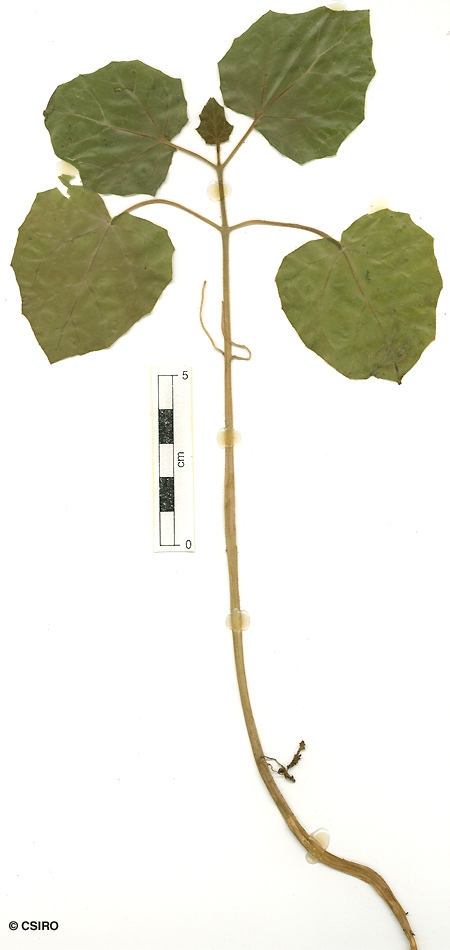
Forster, P.I. (1995) Australian Systematic Botany 8: 788. Type: Queensland, Lakefield National Park, 23 Jan. 1993, P. I. Forster 12876 & A. R. Bean; holo: BRI; iso: DNA, MEL, QRS.
Small Fruited Devil's Claw; Devil's Claws
Usually flowers and fruits as a herb but sometimes as a shrub about 1-2 m tall.
Sticky-topped glandular hairs present on both the upper and lower leaf blade surfaces and also on the twigs, stems and petioles. Stems hollow. Leaf blades usually quite large, about 10-25 x 9-25 cm. Petioles about 18-20 cm long.
Sticky glandular hairs present on all parts of the inflorescence (including pedicels, calyx and corolla). Pedicels about 10-25 mm long. Calyx about 15-20 mm long. Corolla about 55-65 mm overall, tube about 35-45 mm long. Corolla spotted on the inner surface, the spots yellow, pink or purple. Anther locules divaricate but aligned in a vertical plane. Pollen white. Staminodes three, two large and one small. Ovary glabrous. Style about 25-30 mm long. Stigmatic lobes two, unequal in size.
Fruits about 32-33 x 17-20 mm with two sharp-hooked spines at the apex. Endocarp +/- 8-ribbed. Seeds 4 per fruit, each seed about 15-20 x 4-5 mm, laterally compressed, winged at each end. Embryo about 11-12 mm long, cotyledons auriculate or sagittate at the base, much wider than the radicle.
An introduced species originally from Mexico, now naturalised in NT, NEQ, CEQ and southwards as far as north-eastern New South Wales. Altitudinal range in NEQ from 250-1350 m. Usually grows as a weed of agricultural land but also found in monsoon forest and vine thickets in NEQ. Also naturalised in Asia and Malesia.
This species may have medicinal properties.





